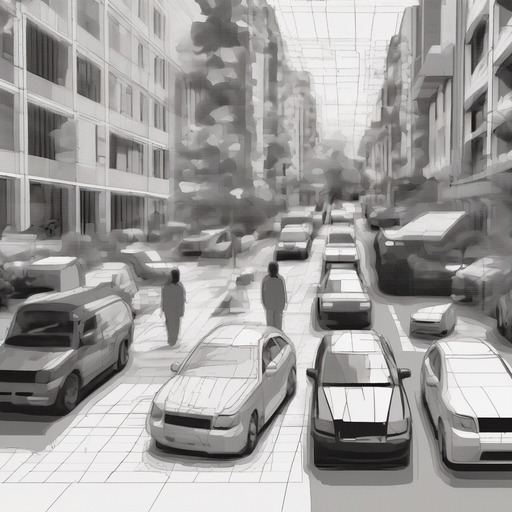Semantic segmentation has become a cornerstone in the realm of computer vision, aiming to assign semantic labels to every pixel in an image, facilitating a more granular understanding of the scene. The “SegNet” architecture, as introduced in this paper, is a pioneering deep learning model designed specifically for this task, providing an advanced solution to image segmentation challenges.
The Essence of SegNet
1. Architecture:
The foundation of SegNet lies in its deep convolutional encoder-decoder structure. The encoder is borrowed from the VGG16 model, renowned for its effectiveness in image classification tasks. However, SegNet discards VGG16’s fully connected layers, reducing the number of parameters and computational intensity.
The decoder’s role is pivotal. While the encoder captures the context in the image, the decoder refines this contextual understanding to offer a more detailed pixel-wise segmentation.

2. Decoder – The Heartbeat of SegNet:
The decoder’s uniqueness lies in its upsampling technique. Traditional upsampling methods in deep learning architectures require learning, which can be computationally demanding. SegNet, however, adopts an innovative approach. During the downsampling phase in the encoder, the max-pooling indices (i.e., the position of the maximum value in a feature map) are stored. The decoder then uses these indices for upsampling, placing the maximal values from the encoder in their original positions and setting other values to zero. This method retains more boundary details of objects, ensuring clearer segmentations.
3. Efficiency and Practicality:
SegNet is not just about accuracy; it’s also about practical efficiency. The absence of fully connected layers and the non-learning-based upsampling significantly reduce the model’s size and computational demands. This ensures that SegNet remains memory-efficient during inference, making it particularly suitable for real-time applications, a crucial requirement in areas like autonomous driving.
Comparative Insights
1. Against Other Architectures:
When pitted against other deep architectures, SegNet showcases its superiority in a few domains. Architectures like FCN, although robust, often produce coarse segmentations. SegNet’s decoder, with its max-pooling indices-based upsampling, offers more refined and precise segmentations. Furthermore, many contemporary models possess hundreds of millions of parameters, making end-to-end training a challenge. SegNet, in contrast, with its leaner structure, facilitates a more straightforward training process.
2. Trade-offs and Decoding Analysis:
The design of SegNet emphasizes the balance between memory efficiency and segmentation precision. By analyzing its decoding technique vis-à-vis models like FCN, it’s evident that the non-learning-based upsampling in SegNet offers memory advantages. However, this also brings forth a trade-off. While SegNet provides clearer boundaries, there might be scenarios where learning-based upsampling could capture certain intricate patterns more effectively.
Applications & Real-world Relevance
Road scene understanding emerges as a primary motivator for SegNet. In the bustling streets filled with cars, pedestrians, buildings, and more, having a model that can swiftly and accurately segment the scene is invaluable for autonomous vehicles. But the applications don’t stop there. SegNet’s flexibility can be harnessed in various domains – from indoor scene understanding to drone-based aerial scene interpretation.

Benchmarking & Performance Metrics
The paper also alludes to the robust performance of SegNet in benchmark datasets. These quantitative results underscore SegNet’s prowess, especially when memory efficiency and boundary precision are paramount. However, as with all models, SegNet’s performance needs to be contextualized based on the specific application and requirements.
Conclusion & Forward Path
SegNet marks a significant stride in semantic segmentation. Its architecture, characterized by the unique decoder design and the efficient upsampling technique, sets it apart in the landscape of deep learning models for image segmentation. While it offers remarkable advantages in terms of boundary delineation and memory efficiency, it’s essential to recognize the inherent trade-offs and choose the model based on the specific demands of an application. With advancements in deep learning and increasing computational power, architectures like SegNet are bound to evolve, offering even more refined solutions to the challenges of semantic segmentation.
invite you to download the paper and access the source code implementation of the paper, which is available on my GitHub repository. The implementation is written in Python.
https://github.com/nimabm/Keras-CamVid-SegNet
